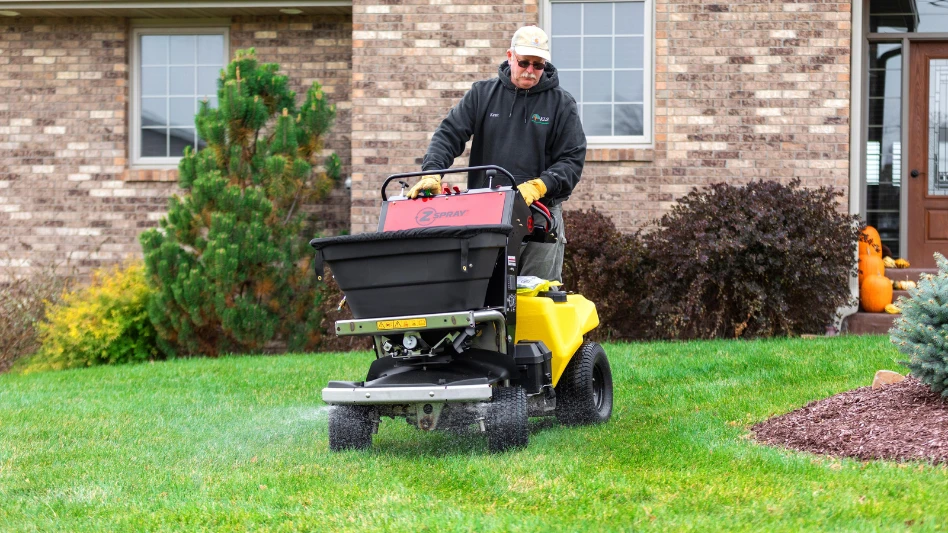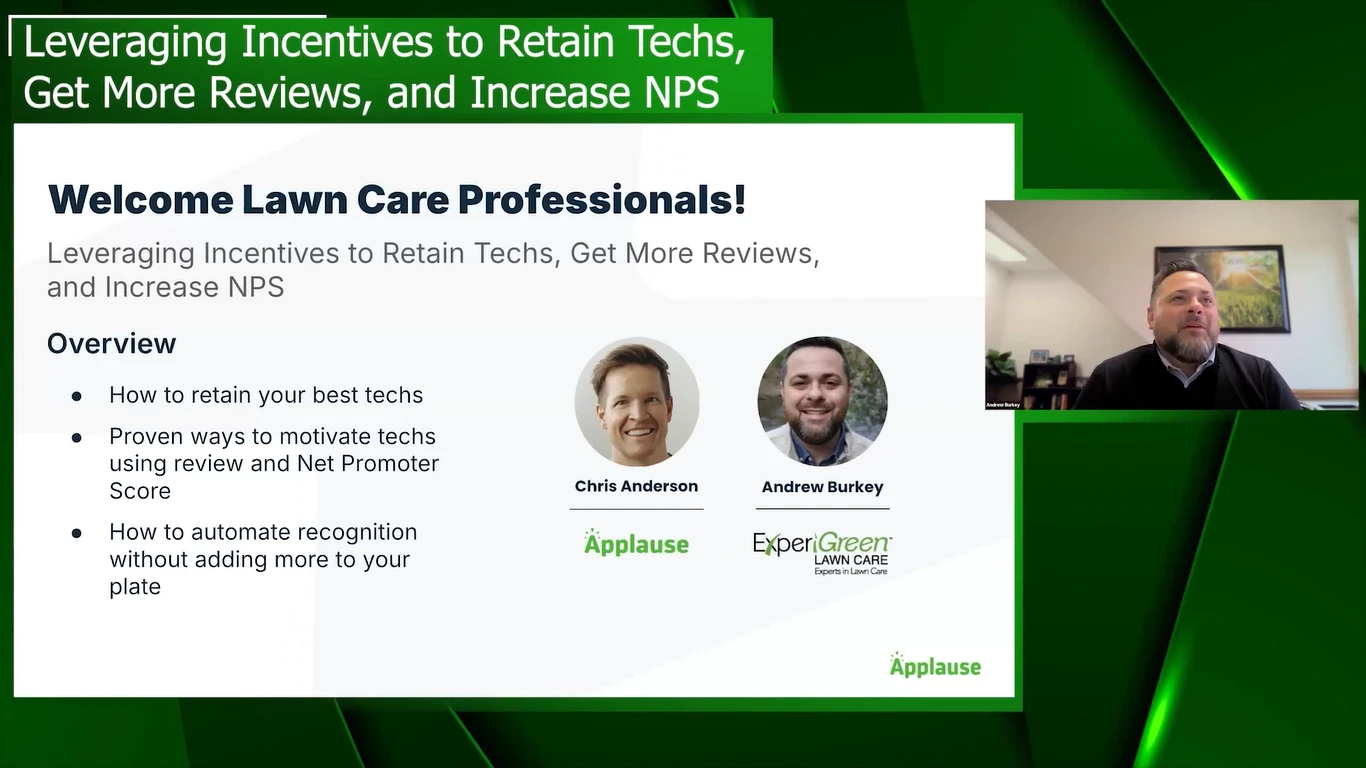So far, so good. Sixty-three percent of landscape contractors say hardscape services are on par with last year’s performance or performing well.
For instance, Ryan Holt defines business as “booming” for his 6-year-old Driftwood Lawn Care & Landscaping in Rising Sun, Md., which employs four full-time workers, as well as one part-time employee.
The firm services mostly middle- to high-end homeowners, with 30 percent of its business comprising hardscape projects. Last year, the company’s revenue was $215,000, and Holt says this year sales are on the upswing. He predicts his company will double the number of hardscape jobs from last year.
Andy Vander Woude, CEO with paver manufacturer VAST Enterprises, Minneapolis, also reports positive news. “Historically, the paver segment of the hardscape industry has been robust, growing at a rate of 10 percent per year,” he explains. “The hardscape industry suffered right alongside the rest of the construction industry in 2008, but the consensus from distributors and contractors I talk with is that the overall hardscape business to date in 2009 seems on par or slightly ahead of the first quarter last year.”
According to Lawn & Landscape research, the areas performing best for hardscape business in today’s economy are renovation projects on residential properties (47 percent of contractors reporting) and new hardscape installations on residential properties (38 percent of contractors reporting). Commercial projects aren’t faring as well, particularly in the new construction category, the research reports.
But contractors’ retaining walls aren’t all filled with daisies. Thirty-seven percent report poor-performing hardscape sales this year. And while 59 percent predict 2009 sales will increase or stay the same, 41 percent forecast decreasing sales – 32 percent say revenue will “decrease somewhat,” and 9 percent say it will “decrease significantly.” But most (34 percent) predict any recession they are feeling will be over by the end of 2009, with the next two largest groups predicting an end in the first (16 percent) or second quarter of 2010 (20 percent).
Increased marketing and keeping prices in check when battling lowball competitors, not to mention staying on top of hardscape trends, drive those businesses that are doing well.
Marketing works wonders
When business is slow, many business consultants and marketing professionals say it’s a great time to capitalize on the competition. Advertising aggressively in an economic downturn, for instance, can increase sales and market share over the competition, providing customers and employees with the feeling of stability in dealing with the company and giving a company an opportunity to dominate the advertising medium, according to Joy Gendusa, owner of PostcardMania, Clearwater, Fla.
“It’s a tough economy, but we have thousands of businesses that are virtually unaffected by the current economic status because they continue to promote,” Gendusa says. “According to American Business Media, history has shown that companies that either steadily continued or aggressively increased advertising efforts during times of economic uncertainty experienced overall growth of their business at the expense of the competition. The companies who focused on advertising also experienced continued growth past the period of economic uncertainty.”
Because money is tight, there is also less competition in the mailbox, so “every dollar you spend can get better results,” Gendusa adds. “A recent study conducted by Penn State shows, ‘The greater the proactive marketing of a firm during a recession, the better its market performance and business performance.’ Companies that ‘invest aggressively in marketing send a reassuring signal of confidence to concerned customers about their staying power and provide an incentive for customers to switch suppliers they perceive as weak.’”
Gendusa may be right. Holt attributes his hardscape growth directly to his aggressive marketing in an economy when many businesses are hesitant about spending. “Last fall, when all the talk was of the sagging economy, we hung relatively inexpensive door hangers each week on residences around town,” he explains. “We didn’t get a lot of return on them at the time, but were hoping once spring hit people would remember. Then in spring we hit those same areas again with the goal of name recognition.”
The door hangers generated results. By April of this year, Holt had a scheduled meeting every night with a customer to discuss hardscape project estimates, and the company’s job schedule was already booked until mid-June.
Steve Hansen, owner of Hansen Landscape Contractor, Castro Valley, Calif., spends his money on an extensive show yard to show customers hardscapes first-hand. He also noticed that he used to be one of 10 or 15 ads in his local business phone directory, but the new book features only four display ads for his type of landscape business.
And after a drop in sales in the first quarter of this year, the $2 million-a-year business is finally starting to pick up, which Hansen credits to this marketing. Hansen attributes the 50-percent plunge in business early in the year to consumers’ doom-and-gloom reaction to the economic downturn. But based on a recent increase in daily sales calls, he is optimistic that consumers’ initial numbness might finally be starting to wear off, and his proactive positioning puts him in the right spot for growth.
Industry Consultant Marty Grunder has also been advising businesses to improve their marketing messages and client interaction to weather the economic storm where design/build and hardscapes are concerned. As owner of Grunder Landscaping in Miamisburg, Ohio, Grunder says he just “hustled” and sold a $400 job, which might not sound like a big deal to other landscapers, but it’s work nonetheless.
“The boom that has gone on for many of us in the last 10 years has spoiled us,” he wrote in a recent e-newsletter. “We’ve gotten lazy and soft. Many of us quit calling prospects after 5 p.m., don’t work weekends and try to make our clients play by our rules. You may not like it, but that’s not going to work anymore. Just last week, I sold a $400 job. I won’t get rich off of this one, but it’s a sale and it’s a lot better than nothing. Besides, I think after I work with them on this little job I can convince them to do the $7,500 patio next year and on that job I will make some good money.”
Other out-of-the-box suggestions Grunder offers: 1.) Find other companies that do business with people you could also do business with, such as pool builders, remodeling companies and Realtors, and get on their mailing lists and stay in contact with them; and 2.) Provide unsolicited proposals for hardscape services. “You don’t know if you don’t ask,” he says. “I have sold hundreds of thousands of dollars worth of work to people who didn’t ask for what I proposed. I made a suggestion, got them interested and closed the sale.”
Combatting low prices
Contractors across the board admit that an increasing and sometimes annoying challenge they face more often in this weak economy, is struggling to compete with lowball competitors. Even when they educate customers on the benefits of particular designs and materials, it’s never a guarantee that their bid will be accepted.
Hardscape has always been a significant part of Atlanta’s high-end residential landscapes, according to Dave Price, co-owner of Bennett Design & Landscape in Atlanta.
The 14-year-old landscape architecture firm, which has 12 full-time employees, has experienced a 40 percent revenue decrease from the same time last year in the hardscape portion of the business. Hardscapes make up 50 percent of the company’s annual revenue, which was approximately $2.4 million last year, he says. During the first quarter of 2008, the company had $800,000 in revenue, compared with $500,000 in revenue the first quarter of this year.
And while he cites the area’s recent three-year drought as a key deterrent for residential hardscape business, he acknowledges that the fierce competition by other companies to secure the lowest bid hasn’t helped the situation either.
“People are more cautious, and we’re having to bid against other companies which is taking much longer to close the sale,” explains Price. “And most clients ask for a discount because they see themselves as a commodity for your company, and they want to know what you plan to do for them in this economy.”
Depending on the project, Price says sometimes his firm offers a straight discount, while other times he renegotiates with homeowners on materials in order to secure a particular job. And sometimes his company will decide to take a job for less money because it’s a high profile project. What remains constant is his awareness of the company’s breakeven point.
Sales are also turning around faster, decreasing backlog. The company is booking jobs only three weeks in advance, as opposed to previous years, when projects were scheduled six to eight weeks out, he adds.
Hansen has also found himself lowering prices to match the competition. “Before the recession, we would add a 25 percent markup to cover unforeseen issues and to make a profit,” he says. “Now we simply quote projects without the additional markup.”
Holt stands firm on prices, telling his clients upfront that he may not offer the lowest price for job. But he also pleasantly surprises them with a detailed, professional-looking and comprehensive customer proposal which helps confirm the effort that he will put into a project.
Nature calls
Consumers are definitely gravitating to the concept of outdoor living spaces, especially since many of them realize they are going to live in their homes longer and want to invest in them, say industry members. To that end, there seems to be a growing appreciation for aesthetically pleasing materials that mimic nature’s shapes and textures.
For example, the look of field stone and flagstone have become very popular. Holt says his residential customers appreciate their natural-looking appeal and various applications.
The free-form look these stone pavers offer creates character on a property. Hansen says 95 percent of all retaining walls his company builds are made with natural stone.
Because so many of Price’s Atlanta customers live in historic in-town areas, he says most of these hardscape projects are stone work. “It’s important for us to look at the house’s style, when it was built, and the materials used in that neighborhood. We want to use materials that look period, but also updated.”
Consumers want more color and texture choices, according to Carolina Lobo, vice president of marketing at EP Henry, a hardscape material manufacturer. Manufacturers see an increased demand in products that have three- and four-color blends, as well as aged-finish distressed products that have more texture, he adds.
Experts are also seeing an increase in the usage of permeable pavers, especially in municipalities, which are concerned with stormwater management and drainage issues.
This concept is in harmony with the green building industry, explains VAST Enterprises’ Vander Woude.
“Even during the recession, the demand for green building projects – and the hardscaping associated with them – is growing,” he explains. “Diversify and differentiate your services and the products you bring to your projects. Get LEED certified and become familiar with green initiatives in your area, and learn every aspect of stormwater management from sub-base design to pavement options.”
The authors are a freelance writer based in Lakewood, Ohio, and editor of Lawn & Landscape magazine. Send questions or feedback to nwisniewski@gie.net.

Explore the June 2009 Issue
Check out more from this issue and find your next story to read.
Latest from Lawn & Landscape
- PERC helps debut propane direct-injection fuel system at ACT Expo 2025
- Retargeting Ads – A Secret Weapon for Growing Your Lawn Care Business
- Leading a growing company
- Project EverGreen launches Clean Air Calculator
- Rain Bird acquires smart lawn care company OtO from Toronto
- PBI-Gordon names Marvin as VP of research and development
- Mean Green rolls out Vanquish Autonomous mower
- Focal Pointe launches new podcast series





